How do I pick the right shaft for me? Irons edition
With the increased availability of custom fitting in golf over the last decade or so, the importance of the shaft is something that has become a larger and larger part of the conversation when it comes to optimising your numbers. The list of shafts that you can put into your clubs nowadays is huge, so how are we able to sift through the options and find the ideal shaft for your game? In this 2-part series we’ll be looking into the dark arts of shaft fitting. Today we’ll be focussing on irons.
So, what role does the shaft play in your irons? With the right shaft in your club your shots will feel stable, comfortable and will produce your best flight. While the head of the club is obviously a key factor in getting the ideal flight, putting the wrong shaft on that head can result in a major drop off in performance. The first thing we will look at while fitting is your club speed, this will give us a rough guide to the flex of shaft that will suit you best, the quicker your swing, the stiffer your shaft will need to be. This will give you optimal control, as a shaft with too much flex will be moving and twisting as you swing it and make it harder to find the middle of the face along with changing the loft that you deliver, the face angle and the lie angle at impact, all of which can have adverse effects on the spin, launch, ball speed and direction which are the key parameters when optimising your iron flight.
So, we have ascertained the right flex for you, within that given flex you’ll notice there is still a huge range of options, and this is the key takeaway. Flex is one aspect of the shaft; bend profile and weight can make it or break it. So, what is bend profile then? Bend profile is where the shaft is stiffest and softest, and your requirements will change dependent on tempo and delivery. The more flexible a shaft tip is (where the head is), the easier it is to present loft. So, if you tend to hit a low ball and need more launch and spin, shafts with a softer tip will help promote a higher ball flight and vice versa when it’s stiffer. When the midsection and butt end are softer, you get into more of a feel conversation and much of that will be driven by your tempo. For a quicker tempo, you’ll likely want more stiffness in your hands, this is because as you transition into your downswing the midsection of the shaft is put under the most strain and will want to flex, so if you transition more aggressively you need more stiffness in that portion of the shaft for it to feel stable. This is where a lot of the feel of a shaft comes from as you’ll notice the stiffness more with a slower tempo due to how the vibrations move into your hands.
After looking at flex and bend profile we’re now into weight! Now weight won’t necessarily change the flight of the ball on its own but what it can do is change your delivery of the club. With a lighter shaft it can be easier to release your hands, present more loft and close the face, with a heavier shaft it can keep your hands quieter and avoid throwing the club out in front of you from the top of the swing. However, this is where a fitting is vital, the only way to accurately measure what’s happening when it comes to delivery numbers is using launch monitors such as Trackman where we can measure how you swing it and then decide the best suited weight for you.
The final aspect I’ll discuss is material, steel or graphite. When we get slower swing speeds in, a common route to go down is graphite. This is a lighter and more flexible material than steel so offers certain benefits such as increased club speed, launch and spin. The lighter material can also simply feel more comfortable due to reduced vibrations into your hands, this can be great for golfers with arthritis and while this is available in steel shafts such as Dynamic Gold shafts with VSS, a strip of vibration dampening foam on the interior of the shaft, the graphite is simply a better material for vibration dampening than steel. Graphite shafts aren’t just for slower swing speeds though, as they are available in the stiffer flexes so for those who need stability but play better with a lighter shaft, graphite is still a viable option.
So there we have it, your comprehensive overview for iron shaft fitting. It cannot be stressed enough though, all of this information gives you the knowledge of where to start, but without hitting it on a launch monitor it’s impossible to know if a shaft truly works for you. So if you think your current shafts aren’t ideal or you just want a change, come and get fitted and see the benefits.
Jim Mitchell
Custom Fit Specialist
Peter Field Golf Shop



